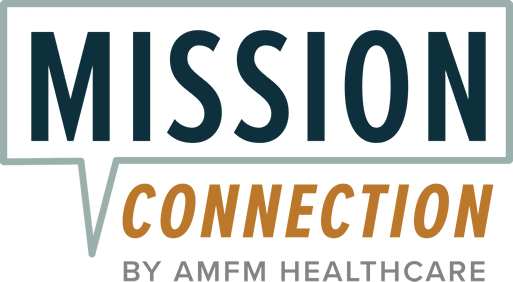Anger Management for Veterans: Specialized Support for Anger and Irritability After Service

But for many veterans, that same instinctive anger response doesn’t switch off when the mission ends. Research shows that veterans experience higher levels of anger and more difficulty managing it compared to civilians, with nearly one in five reporting problematic anger.1
Long-term, overwhelming anger issues after military service cause damage to your health, your relationships, and your ability to reintegrate into civilian life.
On this page, we’ll take a look at what causes anger and irritability in veterans, how it’s connected to trauma, its real-world impact, and mental health strategies for anger management for veterans.

Key Takeaways
- Anger management for veterans addresses military-related stress, trauma, and emotional reactivity.
- Common triggers include hypervigilance, loss of structure, and unresolved combat experiences.
- Therapy helps veterans build skills for self-regulation, communication, and emotional awareness.
- Recognizing warning signs early—such as outbursts or withdrawal—can prevent long-term issues.
- Professional support promotes smoother transitions to civilian life and healthier relationships.
Table of Contents
What Causes Anger and Irritability in Veterans?
Let’s explore some of the most common causes of anger and irritability in veterans:
Post-Traumatic Stress Disorder
Moral Injury
Many veterans also experience moral injury that comes from witnessing or participating in actions that violate one’s moral or ethical code. It’s the kind of internal conflict that simmers over time and shows up as irritability, guilt, or rage if those feelings don’t have a place to land.
Traumatic Brain Injury
Long-Term Sleep Problems
Long-term sleep problems, which are common among veterans, also chip away at emotional stability. Lack of restful sleep impairs emotional regulation and makes patience thinner and tolerance nearly nonexistent.
Transitioning Back to Civilian Life
Finally, there’s the fact that transitioning from military to civilian life is no small feat. If you’ve gone from leading a team in combat zones to feeling underemployed or invisible in civilian spaces, frustration and anger are natural, very human responses to it.
Signs of Anger and Irritability in Veterans
Besides obvious shouting or explosive outbursts, anger may show up with many subtle signs, such as:
- Big reactions to seemingly minor annoyances
- Difficulty waiting, handling delays, or tolerating mistakes
- Sarcasm, cutting remarks, cold silences, or subtle jabs
- Isolating from family and friends
- Restlessness, which is difficulty sitting still and constant fidgeting
- Hypervigilance
- Physical changes, such as a racing heartbeat, chest tightness, clenched jaws, turning red in the face, and tense muscles
How Are Anger and Trauma in Veterans Related?
The three main ways PTSD and anger in veterans are related include:4
1. Nervous System Activation
PTSD keeps your nervous system revved up with your heart pounding, muscles tense, and breathing shallow. Your body basically acts like it’s still in the middle of a firefight.
When that’s your baseline, small problems, such as a missed appointment, a disrespectful tone, or someone cutting you off in traffic, hit differently. The system is already flooded with adrenaline, and anger is a natural response to it.
2. Taught Behavior
If your training or traumatic experiences taught you to respond to danger with aggression, that behavior carries over into civilian life. You may lash out quickly or struggle to pause before reacting. It’s not that you want to hurt anyone; it’s just the only way your body knows how to respond when it senses risk.
3. Altered Thoughts and Beliefs
After trauma, your worldview often changes. You may believe people can’t be trusted. That if you lose control, terrible things will happen. Or that no one understands what you’ve been through. These beliefs aren’t always conscious, but they shape how you interpret situations and how quickly you react to them.
The Impact of Unmanaged Anger on Veterans’ Lives
Some major ways in which military veterans’ anger problems can affect everyday life include:5
Strained Relationships: Veterans struggling with intense irritability find that their family life becomes tense. Spouses and children feel emotionally distant from someone they love but can’t fully understand. Friends also slowly back away because they don’t know how to help or how to handle the intensity. What starts as a stress response eventually becomes isolation.
Trouble At Work: Workplaces are built on communication, structure, and teamwork, all of which are disrupted by anger. Veterans find themselves clashing with co-workers or withdrawing entirely to avoid conflict.
Physical Health Issues: Chronic anger activates the body’s stress response system over and over again. Over time, that contributes to high blood pressure, heart disease, digestive problems, headaches, and a weakened immune system. The body is running on overdrive, and eventually, it burns out.
Legal Problems: Unmanaged anger can escalate into legal trouble when it leads to physical altercations or aggressive driving. Law enforcement doesn’t always understand what caused your behavior in the first place, and veterans can find themselves caught up in a system that punishes symptoms without treating the root cause.
Erosion of Self-Identity: Perhaps one of the most painful impacts is the internal one. Veterans often carry a strong sense of pride and responsibility. When anger damages their ability to function or connect, they begin to question who they are.
Effective Veteran Anger Management Techniques
Evidence-based therapies like cognitive behavioral therapy (CBT) and cognitive processing therapy (CPT) help with anger management for veterans.6 Therapy targets all three components: Taught behavior, nervous system activation, and altered thoughts/beliefs.
Anger Management Techniques for Taught Behavior
Veterans develop strong, automatic behavioral reactions to perceived threats if those responses once kept them safe in high-risk environments. The first step in therapy is understanding those patterns, and once they are identified, building healthier, more deliberate responses.
Instead of acting on impulse, veterans are taught how to pause and choose a response in heated moments. Management techniques for behavior include:
- Taking a structured time-out before responding to a trigger in an intentional way to defuse.
- Getting the emotion out of the body through journaling or writing down thoughts.
- Learning to express frustration without aggression, through calm but firm dialogue.
- Practicing new responses to common triggers in a safe, guided setting.
- “Think first, act second” training to slow down the rush.
Anger Management Techniques for Nervous System Activation
Anger lives in the body in the form of a constant state of hyperarousal with muscles tense, heart racing, jaw clenched, and adrenaline pumping. CBT for anger teaches your body when it’s okay to relax through the following ways:
- Box breathing or 4-7-8 breathing to calm the fight-or-flight response.
- Progressive muscle relaxation, where you tighten and then relax each muscle group in your body to release stored tension and bring awareness back to your physical state.
- Anchoring your focus on what you can see, hear, and feel in the moment of an anger spike to bring your nervous system down.
- Self-guided imagery, for example, imagining a calm place or rehearsing a peaceful scenario to reset your body’s alarm system.
- Getting your body moving through structured exercise, like walking and lifting, to use up excess adrenaline.
Anger Management Techniques for Altered Thoughts/Beliefs
Overestimation of the current threat, where you see danger in situations that are objectively safe- Negative beliefs about the self
- Negative beliefs about others or the world
In CBT-based anger management therapy for veterans, you begin with thought monitoring, learning to slow your brain down and pay attention to what’s going through your mind in the moments leading up to anger.
As patterns emerge, you work towards cognitive restructuring to systematically challenge these automatic thoughts. These exercises gradually reduce the speed and intensity with which thoughts spiral into anger.
Self-Help Strategies for Anger and Irritability Management
Even without formal therapy, there are concrete, research-based strategies you can use on your own to start gaining more control over your anger and irritability. Here are some veteran anger management techniques to try:
- Keep a daily anger log to note what triggered your anger, what thoughts ran through your head, how your body felt about it, and what you did in response.
- Practice tactical pausing, which is where you delay your reaction by a few seconds. Count backward slowly from ten, or focus on one breath cycle before responding, and if it is possible, walk away from the scene.
- Try evidence-based techniques to calm yourself down, such as splashing cold water on your face, progressively relaxing your muscles, or deep, intentional breathing.
- Use moderate-intensity movement like walking, cycling, swimming, or lifting weights to regulate your adrenaline. Set up a movement routine at the same time for structure.
- Build micro-routines that reduce stress. Start and end your day with consistent habits (e.g., same wake time, hygiene, movement, meals) and plan your breaks.
- Social support has a buffering effect on emotional dysregulation. Try coping with irritability after deployment by connecting with fellow veterans struggling with similar issues. Join vet centers, VA groups, or online communities focused on anger management for veterans, and get yourself an accountability partner.
The VA’s Anger and Irritability Management Skills (AIMS) Course
The course draws heavily from the SAMHSA Anger Management Participant Workbook, a widely used and research-backed program that’s already proven effective across many VA facilities.9 The course is structured into eight self-paced modules. Each module contains:
Motivational content like veteran mentor stories and quotes that keep you engaged and remind you that you’re not in this alone.- Psychoeducation that breaks down what anger really is, how it starts, what keeps it going, and why it becomes a problem. You’ll learn how to spot your own warning signs and recognize habits that fuel irritability.
- Practical tools and exercises like self-monitoring worksheets, anger-tracking logs, and CBT-based skill practice.
Alongside the web course, there is an app developed by the National Center for PTSD, which offers mobile access to many of the tools introduced in the course.
AIMS is not a substitute for formal mental health treatment. It is only a supplement or a bridge you can start with while waiting for care or figuring out whether you’re ready for therapy. It is also great for reinforcing and practicing what you’re already learning in counseling sessions.
Seek Support for Anger Issues at Mission Connection
At Mission Connection, we understand that for many veterans, anger is a deeply wired response to stress, trauma, or past experiences that still feel unresolved.
We offer a range of veteran-informed treatment options, from outpatient care and virtual therapy for flexibility to group and family counseling for connection and repair.
Our treatment programs are designed with your military background and real-world challenges in mind. Call us or contact us online to learn structured skills for coping with anger in veterans.

References
- Adler, A. B., LeardMann, C. A., Roenfeldt, K. A., Jacobson, I. G., & Forbes, D. (2020). Magnitude of problematic anger and its predictors in the Millennium Cohort. BMC Public Health, 20(1). https://doi.org/10.1186/s12889-020-09206-2
- Van Voorhees, E. E., Dennis, P. A., Neal, L. C., Hicks, T. A., Calhoun, P. S., Beckham, J. C., & Elbogen, E. B. (2016). Posttraumatic stress disorder, hostile cognitions, and aggression in Iraq/Afghanistan era veterans. Psychiatry, 79(1), 70–84. https://doi.org/10.1080/00332747.2015.1123593
- Miles, S. R., Hammond, F. M., Neumann, D., Silva, M. A., Tang, X., Kajankova, M., Dillahunt-Aspillaga, C., & Nakase-Richardson, R. (2021). Evolution of Irritability, Anger, and Aggression after Traumatic Brain Injury: Identifying and Predicting Subgroups. Journal of Neurotrauma, 38(13), 1827–1833. https://doi.org/10.1089/neu.2020.7451
- Moore, M. J., Shawler, E., Jordan, C. H., & Jackson, C. A. (2023, August 17). Veteran and military mental health issues. StatPearls – NCBI Bookshelf. https://www.ncbi.nlm.nih.gov/books/NBK572092/
- Miles, S. R., Martindale, S. L., Flanagan, J. C., Troyanskaya, M., Reljic, T., Gilmore, A. K., Wyant, H., & Nakase-Richardson, R. (2023b). Putting the pieces together to understand anger in combat veterans and service members: Psychological and physical contributors. Journal of Psychiatric Research, 159, 57–65. https://doi.org/10.1016/j.jpsychires.2023.01.013
- Van Voorhees, E. E., Dillon, K. H., Wilson, S. M., Dennis, P. A., Neal, L. C., Medenblik, A. M., Calhoun, P. S., Dedert, E. A., Caron, K., Chaudhry, N., White, J. D., Elbogen, E., & Beckham, J. C. (2019). A comparison of group anger management treatments for combat veterans with PTSD: Results from a Quasi-Experimental Trial. Journal of Interpersonal Violence, 36(19–20), NP10276–NP10300. https://doi.org/10.1177/0886260519873335
- Ouhmad, N., El-Hage, W., & Combalbert, N. (2023). Maladaptive cognitions and emotion regulation in posttraumatic stress disorder. Neuropsychiatrie, 37(2), 65–75. https://doi.org/10.1007/s40211-022-00453-w
- Veterans Affairs. (2014). Anger and Irritability Management Skills – Veteran Training. www.veterantraining.va.gov/aims/
- SAMHSA. (2019, October 1). Anger Management for Substance Use Disorder and Mental Health Clients: Participant Workbook. SAMHSA Library. https://library.samhsa.gov/product/anger-management-substance-use-disorder-and-mental-health-clients-participant-workbook/pep19-02-01-002
Veteran Anger Management FAQs
Anger management for veterans is a therapeutic approach that helps former service members understand, manage, and reduce anger linked to military experiences or stress.
Veterans may struggle with anger due to PTSD, combat exposure, lifestyle changes after service, or difficulty adjusting to civilian norms and expectations.
Signs include frequent irritability, emotional outbursts, avoidance of others, strained relationships, or trouble calming down after conflict.
Treatment involves evidence-based therapy, such as CBT or trauma-informed care, often paired with stress-reduction techniques and peer support.
If anger interferes with your daily life, relationships, or mental health, it’s time to seek support. Mission Connection Healthcare offers veteran-specific anger management services to help you regain emotional balance. Contact us today to explore treatment options.






